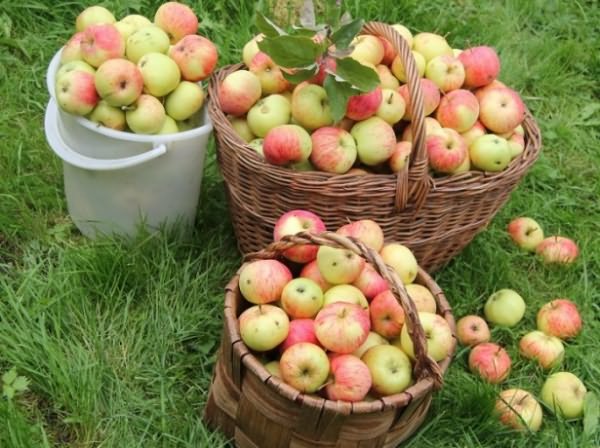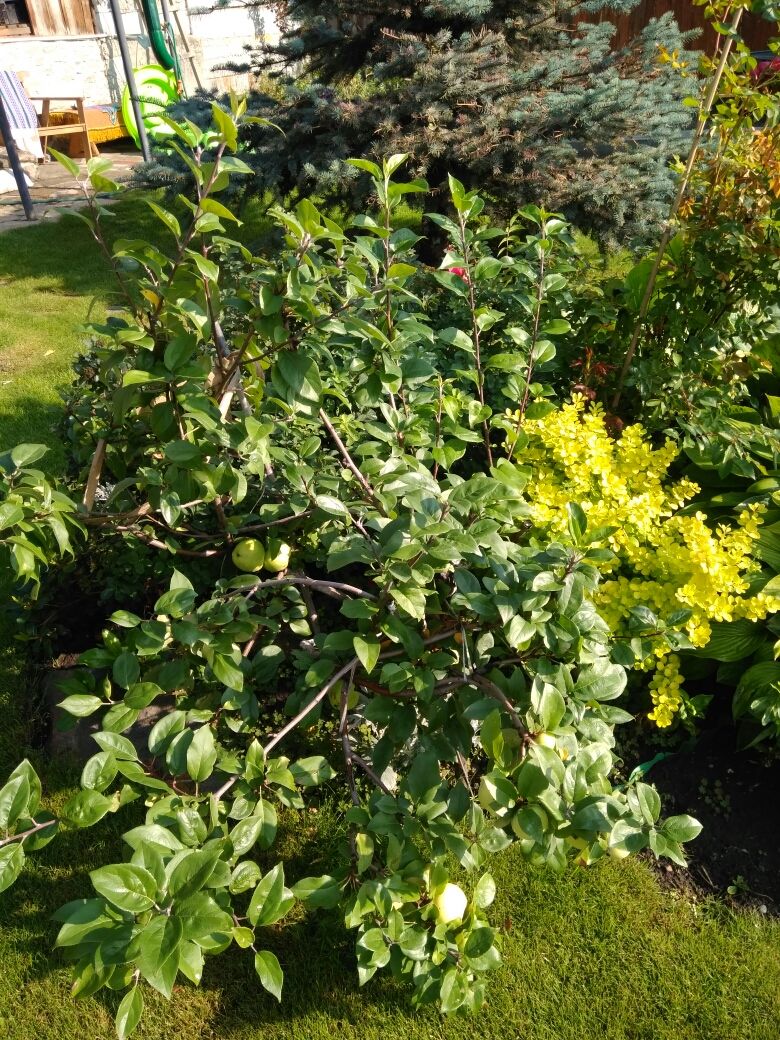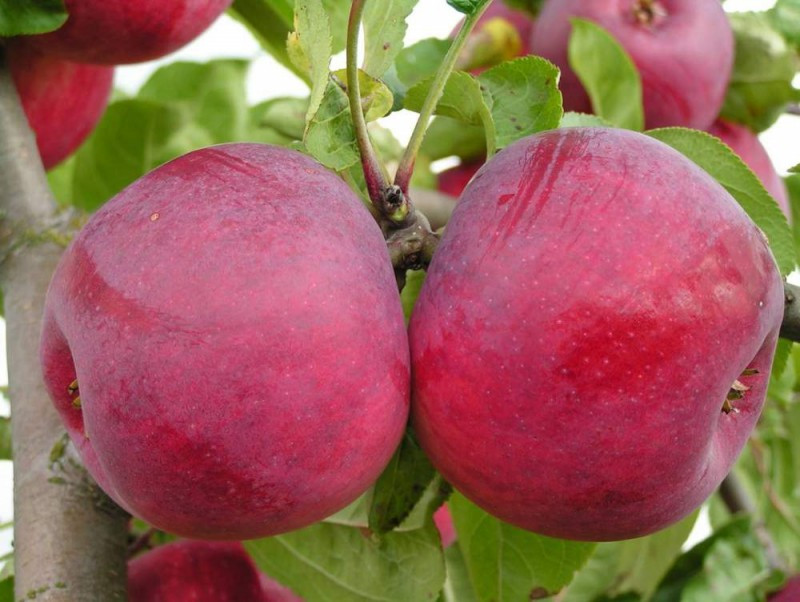Content:
In recent years, miniature varieties of apple trees, which are characterized by compactness of trees, have been very popular, and many of them are bush apple trees. The advantages of such dwarf forms of apple trees include ease of care and cultivation. Such advantages are especially noticeable when growing fruit trees in cold regions (middle lane, the Urals and Siberia), where winters are frosty, and abrupt weather changes are characteristic of the summer period.
The Apple tree Tiny is one of the most popular dwarf species of such fruit trees, its main advantages are above average yield, excellent decorative appearance, good taste. Those gardeners who are looking for new varieties of apple trees for their garden plot should turn their attention to this fruit tree, to its characteristics and other positive qualities.
The history of the creation of the variety
It is impossible to say by whom exactly this dwarf apple variety was bred. But his seedlings are distributed through the Siberian Garden nursery, where you can buy any number of seedlings.
This bush apple tree, due to its high frost resistance, can be grown in the harsh climate of the Urals, Western and Eastern Siberia. However, many gardeners in the reviews say that the frost resistance of the Bush apple tree is sometimes less than the declared one, so often these shrubs freeze or freeze out in too cold winters.
Characteristics and description of the apple tree variety
The bush is compact, looks neat, the shoots can reach 55-60 cm in height. This fruit shrub has a very beautiful appearance - the branches are straight below, and at the top they bend to the ground under the weight of ripening fruits, the shape of the bush is correct round. The lower shoots are located parallel to the soil, and upon contact with it, they can form additional roots. As a result, this bush can independently reproduce by root layers.
The upper part of this mature shrubby fruit tree thrives on young shoots. But even on a tall stock, grafted cuttings of the Crumbs do not give a tall tree.
This variety needs regular crown formation; in the process of pruning, different types of this fruit shrub (creeping, bush or dwarf type) can be formed.
.
The branches are quite densely leafy, the color of the leathery glossy foliage is green, with a bluish tint. Leaves are medium-sized, slightly elongated at the end, with well-visible veins.
This dwarf shrub looks beautiful during the flowering period - the buds appear in early May, and by the middle of this month all the bushes are covered with medium-sized light pink flowers with a pleasant aroma. The variety is self-fertile, therefore it does not require the cultivation of other pollinating apple trees nearby.
Some gardeners call this dwarf species "African" because the roots of the dwarf are extremely delicate and do not tolerate low soil temperatures.
Although the variety is recommended for growing in the northern regions, gardeners must carefully cover the root zones of these miniature trees in order to prevent freezing of the soil - this will lead to the obligatory freezing of the roots.
Fruit characteristics: fruits of medium size, round shape with noticeable ribbing.The weight of a ripe apple is from 90 to 100 g. The skin is thin, it is practically not felt in food, its color can be green with a white tint or yellow. One of the sides, as a rule, turns pinkish-red when ripe. The pulp of apples is white, coarse-grained, with a pleasant apple flavor, juicy. The apples are sweet with a slight sourness to taste. The first fruits ripen already in the second decade of August, you can harvest in the last decade of August, without waiting for the last apples to ripen.
Due to the fact that the harvest is practically not stored, it is better to use it for conservation - to prepare juices, preserves, jams, compotes. It is better to use it in food in the first days after removal - in the future, the taste of apples quickly deteriorates.
After planting the seedlings, fruiting begins in the third season, but the yield is small, only by the 5th season this fruit shrub begins to bear fruit in full force. In the first seasons, no more than 9-11 kg of harvest is harvested from each tree, then the yield increases to 23-28 kg from each apple tree. The small height of the bushes is a great advantage; picking ripe apples is not difficult.
The Kroha variety practically does not stop fruiting throughout the life of the fruit "tree", but there are years when the yield decreases sharply. Most often this is due to freezing of the buds or roots (or the bush is affected by pathogenic microorganisms).
Crumbs of bushes are highly resistant to many diseases. In particular, they are practically not affected by apple scab - the main scourge of many varieties of apple trees. But in early spring, prophylactic treatment of shrubs against bugs should be carried out, whitewashed on trunks and monitor the condition of the bark.
The harvest of these apples is stored in boxes (preferably in wooden ones), into which sawdust or shavings are poured. The fruits should not be in contact with each other. Only whole apples are put into storage.
Agrotechnics
You should buy seedlings of this dwarf variety for planting in nurseries that are engaged in the cultivation of varietal fruit trees and shrubs. The cost of seedlings can be different, it depends on the time of year (in winter - cheaper), on the cost of shipping and some other parameters.
Growing and caring for miniature apple trees is completely different from conventional apple varieties. And if in the southern regions, gardeners spend less effort on growing dwarf bushes, then in more northern regions, summer residents have to work hard in order to grow and get a crop from a variety like Tiny.
First of all, you need to plant the bushes correctly:
- the dimensions of the landing pit should be as follows: diameter - 0.65 m, depth - 0.55 m;
- the landing site should be sunny and not close to groundwater;
- a drainage layer 4-6 cm thick is laid on the bottom. Broken brick or small crushed stone can be used as a drainage material;
- the substrate with which the pits are filled when planting seedlings should consist of equal parts of garden soil, humus, sunflower husks;
- next to the planted trees, you can plant bluegrass, fescue, which will be the best green manure for apple trees.
After planting, at least a bucket of water is introduced under each bush. From above, the trunk circle can be covered with compost or chopped grass. The thickness of the mulch layer should be at least 8-10 cm.
Further care of the growing trees consists in regular watering, loosening the near-trunk circle with the simultaneous removal of weeds. Also, do not forget about fertilizing.
Along the edge of the trunk circle (at the level of the end of the crown), pits are made 25-35 cm deep. A couple of weeks before the foliage completely falls, liquid fertilizer with ammonium nitrate is poured into each of the holes (1.5 tbsp per bucket of water).
Such a top dressing should be applied under the Crumb's apple tree every few seasons. The amount of the diluted drug should be increased with each season (the norm is 1 tbsp. L. Per year of the tree's life).
If these dwarf apple trees are grown in climates with cold winters, they should be taken care of in autumn (especially the root system). A couple of weeks before the onset of frost, the root zone is covered with a layer of mulch 20-25 cm thick. And when the air temperature drops below 0⸰С, the entire bush, together with the near-trunk circle, can be covered with any covering material. In spring, the bushes should be opened after the air temperature does not drop below 14-16⸰С.
Advantages and disadvantages of the variety
Among the advantages of the Tiny dwarf apple tree are the following:
- good decorative qualities of the bushes;
- ripe apples have good taste;
- good yield;
- harvested crop - universal purpose;
- high resistance to apple scab.
However, the variety also has enough disadvantages:
- the shrub is not too frost-resistant;
- the harvested crop is not stored for a long time;
- fruits do not tolerate transportation well.
However, the compactness of the crumbs of the bushes, the ability to use the crop for conservation draw attention to this variety. And if the garden area is not too large, you should think about growing dwarf apple trees so that you can enjoy delicious juicy apples from your garden.















